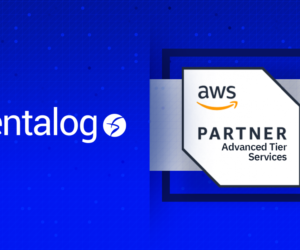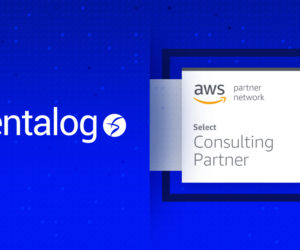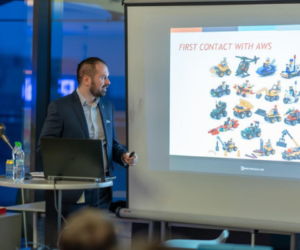Security, scalability, maintenance. How do you manage an IT infrastructure? The software market is currently experiencing exponential growth, making it particularly sensitive to change. In 2018, the software industry grew by 5.3% and is expected to continue at the same rate – predicting a 5.1% increase by 2020. This growth is mainly driven by SaaS (software as a service), which represents 22% of the publishing market and offered by 78% of all publishers at the end of 2018 (source: Syntec Numérique).
Additionally, this trend doesn’t seem to be slowing down and tech enthusiasts have every reason to believe it will continue to grow in popularity. Although, SaaS solutions come with numerous advantages in comparison to installed software, it is important to be well-informed and take into account the responsibilities this type of IT solution implies – this is where I can help.

The software market is undergoing strong growth and subject to constant change, which calls for greater vigilance.
Why should I choose a SaaS Solution?
The number of companies opting for SaaS solutions is growing exponentially. Here’s why:
#Time Savings
SaaS offers significant time savings for users (who no longer have to worry about the underlying infrastructure part) and for publishers who can now create solutions without worrying about compatibility with different environments.
#Easy Maintenance
With SaaS, the environment is familiar, the correction of bugs is supported, and the collection of production data is facilitated. In addition, it is easier for customer support to see what the user sees and provide support faster.
#Release upgrades and better patches
Whether on the publisher or user side, the version upgrade of a SaaS solution is always welcome.
The publisher will only have a single deployment to handle, which helps avoid managing multiple versions at the same time as the client (which is often the case when applications are installed on premise). This is is made even easier through continuous deployment.
From a user point of view – updates are transparent and there’s no need to take any action before taking advantage of patches and newest deployed features.
#Win-win commercial operation
Another reason more clients are choosing SaaS is because it allows them to better control costs – especially those related to the infrastructure. When it comes to SaaS, the IT infrastructures supporting these solutions are flexible, managed directly by the publisher and oftentimes more “upscale” than those the client would choose themselves.
On the distributor side, software companies charge a periodic fee (which offers more revenue visibility) and reduce costs associated with installation support on premise.
#Light version
A solution in SaaS mode makes it easy to offer clients “freemium” versions, allowing you to recruit new users at a lower cost and convert them into paying clients. In turn, a new or prospective customer will always appreciate a business for allowing them to test out several solutions easily before finding the one that suits them.
#Product Improvements
With software in SaaS mode, a publisher has access to all usage statistics and logs. These statistics help guide the decision-making process behind improvements, the deactivation of unused features and other platform changes – leading to a more well-defined roadmap.
What are the vigilance points to watch for the IT infrastructure?
If managing an IT infrastructure 100% on your own gives you complete control of the application, this automatically implies greater responsibility that affects, first and foremost – the security of sensitive client data.
#Data security
Offering SaaS solution to its clients requires managing security of their data. That involves:
-
Setting up adequate protection solutions whether at the infrastructure or application level.
-
Regularly checking that attacks are well blocked (regular penetration tests…).
-
Following a strict data privacy policy within the company (related to the GDPR): conversion of production databases into anonymized test data sets, security policy at each workstation of employees who can access to production data.
-
Sometimes passing certifications so that the solution is used in companies that requires these elements.
-
Having an application architecture and rights management sufficiently reliable so that the client data is perfectly partitioned.
#Scalability
The architecture of a SaaS solution and its supporting infrastructure must be scalable to avoid display latency issues due to periodic load peaks (example: payroll application mainly used at the end of the month).
#Responsibility of service availability
By providing applications in SaaS mode, a publisher indirectly provides the infrastructure. And, even if it is managed by a third party, in the event of a service interruption, it is the publisher who will find themselves in front of unsatisfied clients and in the face of a potential credibility hit.
This lead me to my next point.
What about the infrastructure for the publisher?
Oftentimes, software companies lean on IaaS Cloud solutions such as AWS and Azure. Even if we are tempted to use the services offered by these suppliers, it is important to maintain a certain independence or set up an architecture allowing publishers to deploy and cancel these services without difficulty.
A publisher should be able to change suppliers without having to change everything in their architecture/code in the event that a provider increases rates or becomes undependable.
Pentalog helps you optimize the management of your IT infrastructure
For over 25 years, Pentalog has accompanied 150+ software companies as a trusted partner. Beyond software development, we offer additional services to support you in all the above mentioned issues.
I. DevOps
DevOps culture refers to the fusion of various practices and tools applicable to software development and the administration of IT infrastructure. DevOps is based on process automation and the enhanced cooperation between developers to reduce the time to market of products and improve client satisfaction.
Here are just a few benefits of implementing DevOps culture in your operations:
-
Faster alignment with latest technology trends
-
Automated proactive continuous monitoring: more reliable software and greater reactivity to technical challenges
-
Continuous deliveries with optimized deployment times
The results? By implementing DevOps, you can expect to experience a 58% improvement in software quality, 65% improvement in time to market, and cycle times of 1 day compared to 9-12 months.
II. Security by design
Engineers incorporate security elements both at the code level, the infrastructure and from the design stage. Security inspection tools can also be incorporated into the development and continuous integration environment.
III. GDPR
Pentalog specialists support you to ensure your product is up to code with latest legislations in effect – such as the GDPR.
If you’re looking for the right solution to your IT infrastructure, contact us!
You might also be interested in:
Beware of the Microservices Architecture Hype
Agile Methodology: 4 Ways to Set your Project up for Success










